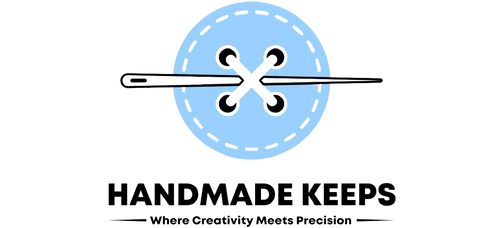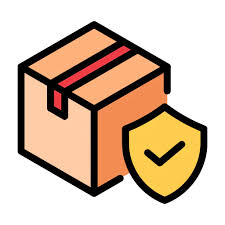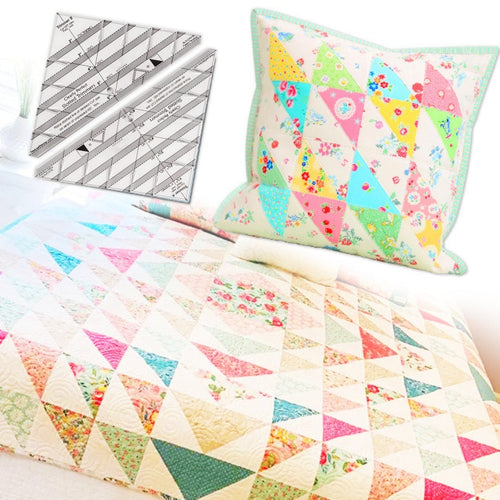Wondering how much fabric you need for your quilt?
This guide breaks it down clearly—yardage by size, type, and purpose—so you save fabric, avoid mistakes, and quilt with confidence.
What Does “Yardage” Mean in Quilting?
In quilting, yardage means the length of fabric measured in yards. One yard equals 36 inches in length. Most quilting fabric in the U.S. comes on bolts that are about 42 to 44 inches wide.
Understanding yardage helps you buy the right amount of fabric for your quilt. If you miscalculate, you might run out before you finish—or buy too much and overspend.
U.S. Standard Quilt Sizes and Yardage Estimates
Every quilt size needs a different fabric amount. Here’s a quick table with standard quilt dimensions and their estimated fabric yardage:
| Quilt Size | Dimensions (inches) | Estimated Yardage |
|---|---|---|
| Baby | 36" x 52" | 2–3 yards |
| Throw | 50" x 65" | 4–5 yards |
| Twin | 70" x 90" | 6–7 yards |
| Full | 80" x 90" | 7–8 yards |
| Queen | 90" x 100" | 8–9 yards |
| King | 110" x 110" | 10–11 yards |
Precut Options:
You can also use fat quarters, jelly rolls, and charm packs. These are great for patchwork and small projects.
How to Calculate Yardage for Your Quilt
To estimate yardage:
-
Multiply the length by width of the finished quilt in inches.
-
Divide that by 1,296 (because 36" x 36" = 1,296 square inches = 1 yard).
-
Add extra for seams, waste, and layout needs.
Example:
A 60" x 80" quilt top = 4,800 square inches
4,800 ÷ 1,296 = 3.7 → round up to 4 yards
Add ½ yard for seams = 4.5 yards total
Use our calculator at HandMade Keeps for quick results.
Fabric Bolt Widths in the U.S.
Most quilting cotton in the U.S. has a bolt width of 42–44 inches. This is called WOF (Width of Fabric).
Only part of the bolt is usable—usually around 40–42 inches after removing selvage edges. This affects how many strips or blocks you can cut across the width.
Seam Allowance & Cutting Waste
Quilters use a ¼ inch seam allowance. It might not seem like much, but it adds up across many pieces.
Always add extra fabric to cover seam allowance and cutting waste. Pre-washing fabric also causes slight shrinkage—usually around 3–5%.
Backing Fabric Yardage: How Much Do You Need?
Backing fabric must be wider and longer than the quilt top—add at least 4–6 inches to both length and width.
Example for a Queen Quilt:
Top: 90" x 100" → Backing: 96" x 106"
If fabric width is 42", you’ll need two panels sewn together (horizontal or vertical seam). For directional prints, pattern placement matters.
Border and Binding Yardage
Borders require more fabric, especially if adding multiple layers.
Binding covers the outer edge. To calculate binding:
-
Add all sides for perimeter
-
Divide by usable WOF
-
Multiply by strip width (usually 2.5")
Batting Yardage vs Top Fabric Yardage
Batting should extend 2–3 inches beyond all sides of the quilt top.
Example:
Quilt top = 60" x 80" → Batting = 66" x 86"
Batting rolls come in various widths like 96", 108", or crib-size. Choose based on your quilt size.
Example: Calculating Fabric for a Queen Quilt
Let’s say your Queen quilt measures 90" x 100":
-
Top Fabric: 7 yards
-
Backing: Two panels at 96" x 54" → ~6 yards
-
Batting: 96" x 106"
-
Binding: Perimeter = 380" → ~½ yard
Total = ~14 yards (rounded up). Always buy a little extra to stay safe.
Tips for Buying the Right Fabric Amount
-
Round up yardage—extra is better than too little
-
Bring a written list of sizes and measurements
-
Use fabric calculators or guides
-
Save notes for future reference
-
Always prewash cotton fabric before cutting
U.S. Quilt Shops vs Online: Where to Buy Fabric
Local quilt shops offer personal help and immediate fabric comparison. Online stores offer wider selections and bundle deals.
Popular U.S. options:
-
Joann Fabrics
-
Missouri Star Quilt Company
HandMade Keeps offers quilting templates and free guides to make cutting easier.
Precut Fabric and Yardage: Can You Mix Both?
Yes, you can. Just be sure the measurements align.
Common precuts:
-
Fat Quarter: 18" x 22"
-
Jelly Roll: 2.5" strips
-
Charm Pack: 5" squares
Use precuts for design, then calculate the remaining fabric needed.
Most Common Mistakes When Estimating Yardage
-
Forgetting seam allowance
-
Ignoring fabric shrinkage
-
Assuming bolt width is always usable
-
Not adjusting for print direction or borders
Quilting Tools That Help With Yardage
Helpful tools for quilters at HandMade Keeps include:
-
Shipping Protection for all U.S. orders
These products make measuring and cutting more accurate and less stressful.
FAQs
What does 1 yard of fabric look like?
It is 36 inches long and about 42–44 inches wide.
How many yards is a fat quarter?
It equals ¼ yard, but cut 18" x 22" instead of 9" x 44".
How much fabric do I need for a baby quilt?
Usually 2 to 3 yards, depending on the pattern.
Do I need to prewash quilting fabric?
Yes, especially cotton. It shrinks slightly after washing.
How much extra fabric should I buy?
Always add at least ½ yard more than your calculation.
Conclusion + Final Tips
Measure your quilt. Calculate yardage using our steps.
Account for seams, shrinkage, and fabric width.
Save this article from HandMade Keeps for your next project.




